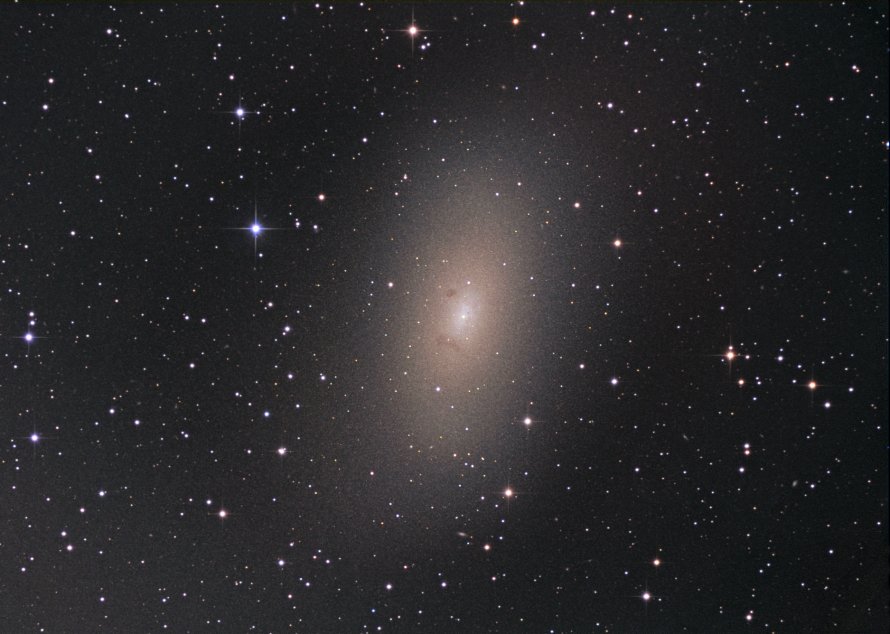M110 (NGC 205) - Edward Young Star
Messier 110 (NGC 205), also known as the Edward Young Star, is a dwarf elliptical galaxy located in the constellation Andromeda in the Local Group of galaxies. M110 is 2700000 light years away from Earth.
M110 is best viewed during winter, is magnitude 8.9, and can be viewed with binoculars. M110 is 22' x 11' in apparent size. For reference, the full moon is 30'.
Observing difficulty: Hard
- Name:
- Edward Young Star
- Type:
- dwarf elliptical galaxy
- Constellation:
- Andromeda
- NGC or IC:
- NGC 205
- Magnitude:
- 8.9
- Viewing:
- binoculars
- Size:
- 22' x 11'
- Distance (light years):
- 2700000 LY
- RA:
- 0h 40.4m
- Dec:
- 41 41'
- Season:
- winter
- Galaxy group:
- Local Group
- Messier Marathon #:
- 6
* The naked eye can see up to magnitude ~7-8 objects under ideal dark sky conditions.
A Dwarf Elliptical Galaxy in Andromeda
Messier 110, also known as M110 or NGC 205, is a dwarf elliptical galaxy that belongs to the Local Group of galaxies, which includes our own Milky Way. Despite not being included in Charles Messier's original catalogue, Messier 110, along with Messier 109, is often considered part of the Messier catalogue due to its closeness to the Andromeda Galaxy (M31), which was catalogued by Messier.
Characteristics of Messier 110
M110 is categorized as an E5 type galaxy in the morphological classification scheme of galaxies, indicating that it exhibits a somewhat elongated elliptical shape. The galaxy contains a rich array of both young blue stars and older red stars, indicating a history of episodic star formation. One of the remarkable features of M110 is its dust lanes, which are unusual for dwarf elliptical galaxies and more commonly seen in spiral or lenticular galaxies.
Moreover, this dwarf elliptical galaxy hosts at least eight globular clusters, suggesting periods of intense star formation activity in the past. Some of these clusters are similar in age to the globular clusters found in the Milky Way, while others appear to be significantly younger.
Apparent Magnitude and Distance
Messier 110 has an apparent magnitude of approximately 8.9, making it a good target for small to medium-sized telescopes. The galaxy is located at an estimated distance of about 2.69 million light-years from Earth. This makes it one of the closest galaxies to our own, providing an excellent opportunity for detailed observational studies.
Finding and Observing Messier 110
Locating M110 is made easier due to its proximity to the Andromeda Galaxy, which is one of the most famous and easily found galaxies in the night sky. M110 is visible as a faint, fuzzy patch about a degree northwest of the Andromeda Galaxy.
Even a pair of binoculars or a small telescope at low magnification can reveal M110 under dark skies. Larger amateur telescopes will show the galaxy's elliptical shape. However, to observe the detailed structure of the galaxy, such as its dust lanes, would require a large amateur telescope or long-exposure astrophotography.
Overall, Messier 110 serves as an intriguing object of study, not just for its proximity to our own galaxy, but also for its unique characteristics that challenge the traditional understanding of dwarf elliptical galaxies.



